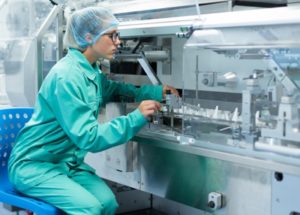By Patrick Lehr, product manager for precision mechanics
A cleanroom is an environment maintained to ensure minimal levels of environmental pollutants such as dust, airborne microbes, aerosol particles, and chemical vapors. It is critical for many applications, including life science testing, semiconductor, inspection, and electronics manufacturing, where contamination must be avoided. To ensure this happens, all equipment in the cleanroom must be contaminant free as well. When manufacturing components for use in a cleanroom, including linear mechanics, strict procedures must be followed to achieve cleanroom specifications.
 Although these moving components will particulate, linear mechanics can still be manufactured and assembled for cleanroom certification, if you consider the quantity and location of particulate formation. In addition, several other variables in an application must be thought about to properly meet these performance requirements, including:
Although these moving components will particulate, linear mechanics can still be manufactured and assembled for cleanroom certification, if you consider the quantity and location of particulate formation. In addition, several other variables in an application must be thought about to properly meet these performance requirements, including:
- Absence or presence of laminar airflow over the stage
Maintaining safety and environmental standards in a cleanroom is critical for application success. To achieve this, it is important to have a fume hood present. The laminar airflow is ideal for applications that require precision linear mechanics and a clean working environment, such as parts inspection, or optic assemblies.
Read the rest of this informative article at the Parker blog site.
